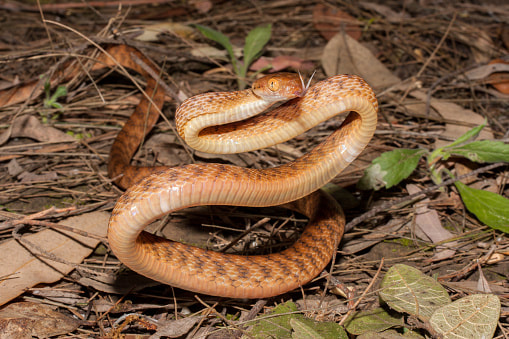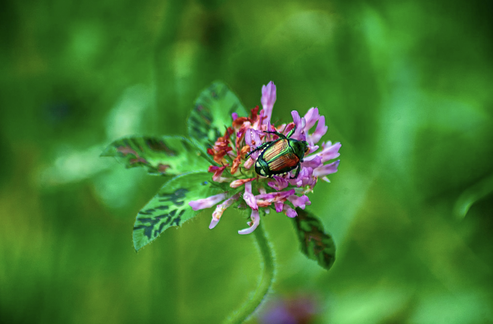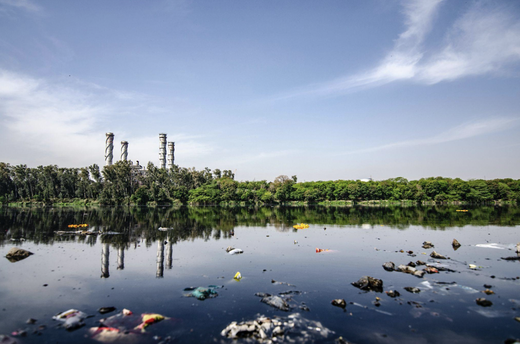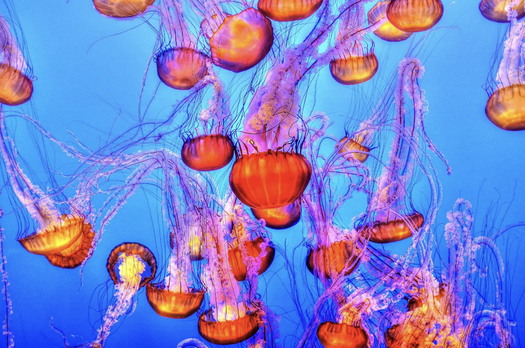|
Humans have a very delicate relationship with animals. For centuries animals have been used for several purposes, be it as pets to fulfill the need for affection or be it for commute so that they can transfer easily from one place to another.
Ethics and the need to do what is right don’t go hand in hand. It has been a long time that people have assumed that they can do whatever they want and how they want in the name of science. We can easily explain this behavior as playing God. The concept of introducing non-native animals to other allocation where the natives have already decided their habitats and have found sense of their food and other sorts of requirements is mostly because of the human intervention. This introduction can create quite the catastrophic condition when the native species haven’t even evolved to deal with these threats. That is when the native biodiversity will be in threat because of all the competitive environment, and that is where the “fittest survives” is being proved.
0 Comments
In the United States, hundreds of free-ranging snakes are discovered each year, most often due to escapes or releases from the pet trade. Most of them do not appear to have established a reproductive population. An animal can be harmful in an area not natively located.
The brown tree snake was introduced to the United States territory of Guam after World War II. Guam is a tiny U.S. territory located midway between Australia and Japan, and it's famous for having been occupied by the Japanese in World War II before being liberated by American troops in 1944. Invasive brown tree snakes have been a major problem for Guam since they arrived on the island due to their ability to kill many birds and reptiles native only to Guam. They have devastated the indigenous birds, mammals, and lizards on the island, leaving only a few small species. Brown tree snakes have also caused problems with rats by killing them off as well as other small mammals like mice or rabbits which can be harmful if their population gets out of control. Modern times and the latest human routine is something that has pushed us all into a swirl of things that has only caused us stress and thus has increased the number of diseases. Nature; A Self Healing Experience
It has been reported that being in nature and establishing a connection with its being is what can cure you in more ways than you might have imagined. At the center of all things natural is when a person is able to not only reduce his or her anger but also take the mind away from all the hassle of the world. There are several other diminished and doomed traits whose severity level is also reduced when a person maintains a healthy connection with nature. It is not only the emotional state of an individual that gets better tenfold when a person resonates with something bigger than just world stress and the drastic impacts of deadlines. It is also the physical health and wellbeing of a person that is improved. Some of the diseases that can get cured by being in nature are as follows:
But it is not just larger-than-life things that have a profound impact on human nature. Small gestures and small efforts can also make quite the difference. Such as having a small plant in your office space or balcony can increase your well-being and can also diminish the power of stress and anxiety on the body. Soothe the Soreness with Nature The emotional pain and hurt that we might feel from life and its ever-growing pressure can get lowered if we try to connect more with the reality of us all, and that is nature. The human body is programmed to find comfort, solace, and content in nature. Where the green of trees makes you feel refreshed, the full-color spectrum of flowers brings joy to the senses, and the rustic wood distracts you from the feeling of void and detachment. It is not just the end results of a poet's imagination or the mighty trail of a bard’s song, and this is something that has been proven as well as backed by science. Robert Ulrich, who was the physician of this study, took two groups of patients who had undergone gallbladder surgery. Half of them were prescribed to look at the wall, and the other half were given a tree to look at. The end of this study was that those who had to look at the tress ended up bearing and tolerating pain much better than those who didn’t. The nurses also took into account that those patients ended up having a larger spectrum of pain tolerance, and the negative effects were also diminished. The time they spent in the hospital was also reduced. This approach is now also in context and has been extended to a larger and wide-scale where nature and plants are being placed inside the hotel rooms. Hawaiian Bobtail Squid and the Tiny Bacteria living in it; An Elegant Display of Symbiosis12/3/2021 One of the key and prominent aspects of the biology of microbiomes as we know them is their interactions that are, in most instances, symbiotic. Nowadays, with the advancement of science and technology, there has been a trend in the context where individuals who are more science
and research centered is preferring to study these interactions with the help of multispecies models as well as microbial interaction in situ. With the help of these studies across various and multiple microbial systems, various common and looped interaction mechanisms have been identified. These interactions range from the presence of pollutants, the competition of nutrients, cross-feeding mechanism, metal access, various signaling pathways, optimum pH, and numerous as well as diverse interactions across the biofilms. With the rightful help of both science and technology, we are now able to use these studies to discover the underlying connection between various interdisciplinary scientific fields in which we have successfully combined the use of genetics, metabolomics, imaging, and microfluidic technique to have an insight regarding the processes that make up this worthy interaction and their impact on both the microbiomes and their environment. The Japanese beetle (Popillia japonica Newman) is an invasive species that is slowly making its way across the United States. While they may not be a threat to human health, their notorious appetite can do serious damage to both lawns and gardens. If you're, like most people, scrambling to figure out how to get rid of Japanese beetles, there are ways to control them before they become too big of a problem, but it takes some effort. So if you're curious about these buggers and want to learn more about how to deal with them, read on!
Japan to America: A story of a century-long invasion The United States is home to a whole lot of pesky invasive insects. How many exactly? Well, you might be surprised! According to an estimate, there are about 4,300 species of invasive insects in the US. The Japanese beetle is the most devastating of all invasive insect species in urban communities. The Japanese beetles, as you can tell from its name, originally belonged to Japan before making America their second home. They were first introduced, and that too, accidentally, within a shipment of Japanese irises bulbs in the early 1900s. Later, they were discovered at a New Jersey plant nursery in 1916. In their native home range, they have natural predators which keep the population of these pesky insects at bay. The absence of Japanese predators and optimal climatic conditions helped these insects to successfully thrive and proliferate in eastern America; where they're loathed by just about everyone. By 2015, they had fully or partially established themselves in more than 70 percent of the US and beyond, in West and North. They've now infested Canada, Italy, Portugal, western Russia, Korea, and some parts of India as well. As with many human-induced invasions, our love for lush green lawns that are watered regularly is what has provided perfect conditions for Japanese beetles' larva to thrive without being bothered by any predators. Today, this ravenous bug is the most widespread garden pest in the US. Identification of Japanese beetle Despite the damages, it is hard not to be impressed with these bugs' looks. The adult beetle is oval-shaped and only about ⅜ inch long. The head and thorax are covered in a fluorescent, metallic green shell and shiny copper-brown wings that shimmer as if an alien life form. They have six legs, two antennae that look like tweezers, and five to six tufts of white hair on each side and rear of its body. These tufts are the key to identifying the flyers from other beetles. We all are aware that water is one of the basic necessities of life. It is important to realize that water pollution kills more people than war and all other sorts of violence combined.
If you are part of the same population that thinks that there is more water on earth than land, you need to understand the fact that, yes, water is in abundance. But the resources of freshwater that we can easily categorize as drinkable water are limited. To believe the global statistics, we have access to less than one percent of the freshwater. As we are expecting an increase in global freshwater, the situation is likely to worsen in the near future, so the challenges will only get hard. What is WATER POLLUTION? Water pollution can be easily understood as a phenomenon when harmful substances such as chemicals, pesticides, insecticides, and other types of pollutants become part of the ecosystem. They then interfere with the habitat and cause contamination in the stream, rivers, lake, and aquifer. All this causes a severe degradation in the water quality, and dependency on these contaminated waters then leads to health complications in humans. Main Culprits or Causes Water is a fluid that is known as Universal Solvent. It is uniquely able to dissolve a lot more substances than any other liquid that is present on our planet. That is why the concept of water pollution is so scary, and that is why we all should be more attentive towards these matters. Today we will be considering some of the main factors that are leading to water pollution and the sectors that we humans depend on so much: ● Agriculture ● Industry The idea of living forever has always fascinated humans, with religions across time exploring ways to achieve it. Scientists have explored many different avenues towards eternal life, from the planets in our solar system and cryogenics on Earth. But what if there was an easier way out? A jellyfish may hold this secret behind its beautiful bioluminescent cloak - in case they ever get into trouble with what's happening on Earth.
Jellyfish are often thought of as "medusas,"; creatures that have the second stage in their life cycle. They spend this phase drifting around with trailing tentacles, looking just like an opaque balloon on floats! There’s an unusual jellyfish species, Turritopsis dohrnii, which can seemingly escape from their deaths altogether. Despite only being three millimeters in diameter on average, these tiny invertebrates can roll back their biological clock, transforming from medusae back into the polyp stage when injured or starving to death - meaning it could potentially live forever! A lot of people think that it's impossible for an animal like this, but if you take into account its ability to escape death when necessary, then even though we may not know all the exact details behind how these jellies do it, it seems possible after all. There's no stopping you if your life goal was survival through regeneration like theirs! The age of immortal jellyfish The age of the immortal jellyfish is a bit more complicated than it seems, but it can live potentially forever. It's been floating through oceans long before the dinosaurs went extinct 66 million years ago and can live to see another 66 or so!  Photo by Jillian Cooper on Unsplash Photo by Jillian Cooper on Unsplash Make way for the natural engineers-Beavers World’s Cutest Protectors! So climate change is no longer something that is a taboo subject. Gone were the days when people used to talk about it behind the doors and in whispers. In recent years if there is one thing that has unified the whole globe together, it is the care for our mother nature. Be it the call of Greta or the elevated interest level that the celebs have shown, global climate change is a topic that is making headlines for all the right reasons. Some of the worst things that humankind is subjected to are the shortage of non-renewable sources as well as the fear that we won’t have much for its coming generations. Let us sum up what are the worst possible consequences of climate change: 1. Oceans are getting warm. 2. The slow but steady rise of the sea level. 3. Prolonged and intense droughts that are threatening the crops. 4. Droughts that also pose serious threats to wildlife or freshwater. 5. Biodiversity endangerment. 6. Serious ambient air pollution. 7. Chronic diseases and their high rates. 8. Heatwaves. 9. Glaciers are melting. 10. Habitat destruction. When you order an iced coffee at Starbucks, do you keep the coffee cup? For many people, this is a no-brainer. In fact, many consumers may now be wondering whether their drink bought in a paper cup has any eco-friendly benefits whatsoever? It turns out that these disposable cups are not so eco-friendly, which leads many environmentalists to call them “coffee cup pollution.”
The throwaway culture of non-recyclable coffee cups Coffee drinkers around the world have been finding out the hard way that their paper cups aren't actually recyclable at all - no matter how many times they have been told by coffee chains. And this isn't just a problem for those of us who take beverages out on the go - as more and more people are using drive-through service as well as home delivery from shops such as Starbucks Coffee. It is estimated that 2.5 billion coffee cups are tossed away each year, taking up landfill space and adding to pollution. In addition, these paper-based products take over 500 years to decompose. With about 5000 cups trashed away every minute, it is important for us to do what we can to reduce this number and protect the environment from pollutants like BPA and DEHP, which are found in paper products. And if that wasn't bad enough for their environment, they also contribute to climate change because they're made from nonrenewable resources like crude oil and natural gas, which release greenhouse gases into our atmosphere during its production, distribution, and disposal. Also, they require virgin materials such as trees. Therefore, it's time for us to be more conscious about what we use when taking our morning coffee break! 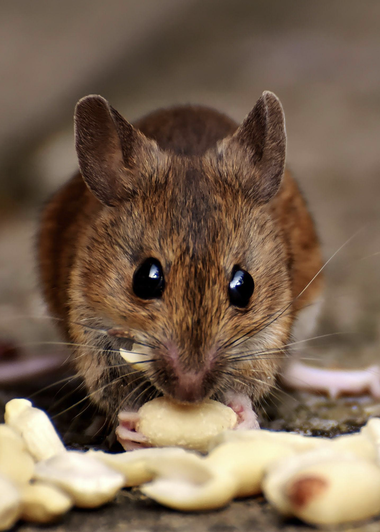 Photo by Alexas_Fotos on Unsplash Photo by Alexas_Fotos on Unsplash The invasive rats in New Zealand have been a major issue for the past decade. The population has risen sharply and is now at an all-time high. The invasive rodents cause harm to New Zealand's native species, as well as damage infrastructure and property. Rats are one of the most destructive invasive species, as they eat both living and dead animals, crops, and poison baits intended to kill them. In response, New Zealand is gearing up to eliminate invasive predators by 2050 - including possums, stoats, and other invasive predators. These animals will be killed or trapped until their populations decline enough that there are no longer any significant effects on native wildlife from these pests! Invasion of Rats in New Zealand The first rats to arrive in New Zealand were introduced by Maori settlers more than 700 years ago. By the time Europeans arrived in New Zealand, there were already several invasive rat species present. Around 1855, ship rats spread across New Zealand's North Island and eventually reached the South Island sometime after 1870. The population of rodents has risen sharply, and they now pose a significant threat. Many species, such as the famous kiwi and the massive kakapo parrot, have lost the ability to fly. They were gentle and settled, and as a result, they were easy pickings for rats, dogs, cats, stoats, weasels, and possums that arrived later on. Over 26 million baby birds and eggs are eaten by these animals every year. What Are Rodents? Rodents are mammals with four front teeth that grow continuously throughout their lives. They have a single pair of chisel-shaped incisors, perfect for gnawing through hard materials like wood and plant matter. A long, thin dental groove on the outer side of each upper incisor delivers blood to an elongated tooth socket where the incisor attaches to the skull. This groove also allows rodents' teeth to self-sharpen as they wear down from gnawing, which is why invasive rats in New Zealand are so destructive! |
|
|
(833) CMS-LINE
(833) 267-5463 PO Box 13477 Mill Creek, Wa, 98082 © Conservation Made Simple. All rights reserved.
501(c)(3) Non-Profit, Tax ID#: 82-1646340 Copyright © 2021 Conservation Made Simple |

